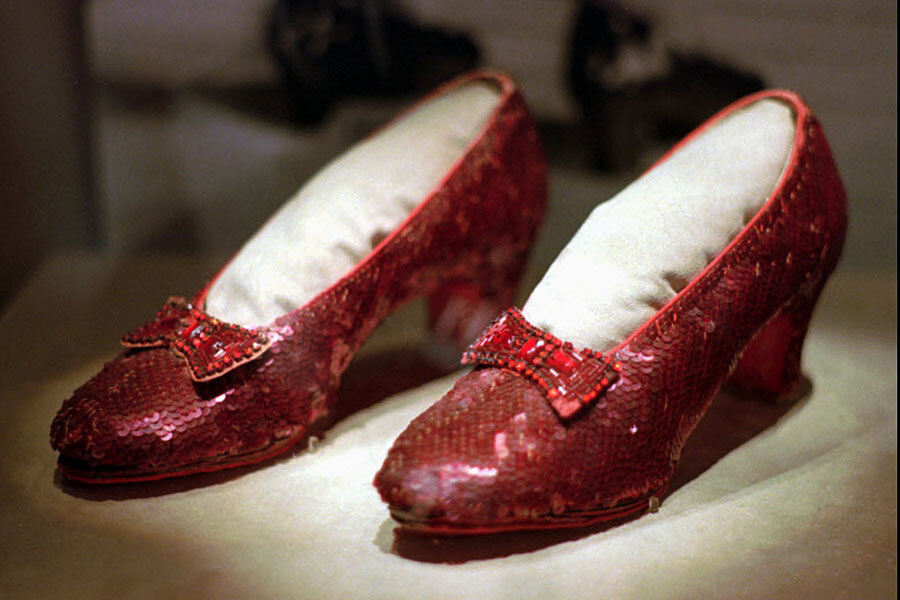Where are Dorothy's ruby red slippers? A $1-million reward offered.
“There’s no place like home. There’s no place like home. There’s no place like home.”
One of the most enduring images of American pop culture is a young Judy Garland clicking the heels of her sequined ruby slippers together and repeating this phrase until she finds herself back home in Kansas.
There are at least four surviving pairs of the iconic slippers used in the 1939 film, “The Wizard of Oz,” including one pair on display at the National Museum of History in Washington, D.C., and another slated for the planned museum of the Academy of Motion Pictures and Arts Sciences.
A museum in Ms. Garland’s hometown of Grand Rapids, Minn., also had a pair of the slippers, but they were stolen 10 years ago next month. And now, an anonymous donor has offered a $1-million reward to anyone who can offer credible information leading to the missing shoes, reports the Associated Press. To qualify for the reward, an informant must be able to supply the exact location of the slippers and the name of the person who took them.
Dorothy's slippers were not just central not just to the plot, but also to the filmmaking process. In the original story written by L. Frank Baum, the slippers are silver. But, according to Smithsonian Magazine, one of the film’s screenwriters decided to change the color to red so that they would stand out against the Yellow Brick Road. The website for the Smithsonian Institution says that the ruby red slippers were created by Gilbert Adrian, MGM Studio’s chief costume designer at the time.
According to the website for the National Museum of History,"The Wizard of Oz" was filmed through "a process in which a specially modified motion picture camera recorded the same scene through colored filters on three different strips of films. These strips were then processed separately and used to ‘print’ colors onto each finished print of the film sent to theaters.”
This method was branded by the Technicolor Corporation and other movie studios had to lease the company’s special movie cameras and team of experts to work the machines if they wanted to film a movie in color.
Although "The Wizard of Oz" was not the first movie filmed in color, it was one of the earliest movies to demonstrate that color could add fantasy and draw audiences to theaters, despite its release during the Great Depression. Even today's more sophisticated audiences still revel at the deeply saturated Yellow Brick Road and, of course, the dazzling ruby slippers.
The National Museum of History curator Dwight Blocker Bowers told Smithsonian Magazine that the pair of ruby slippers they have on display are a crowd favorite.
“It’s the idea,” he says, “of ‘there’s no place like home'; and that there is a warm place to cling to – it’s a shared memory.”






